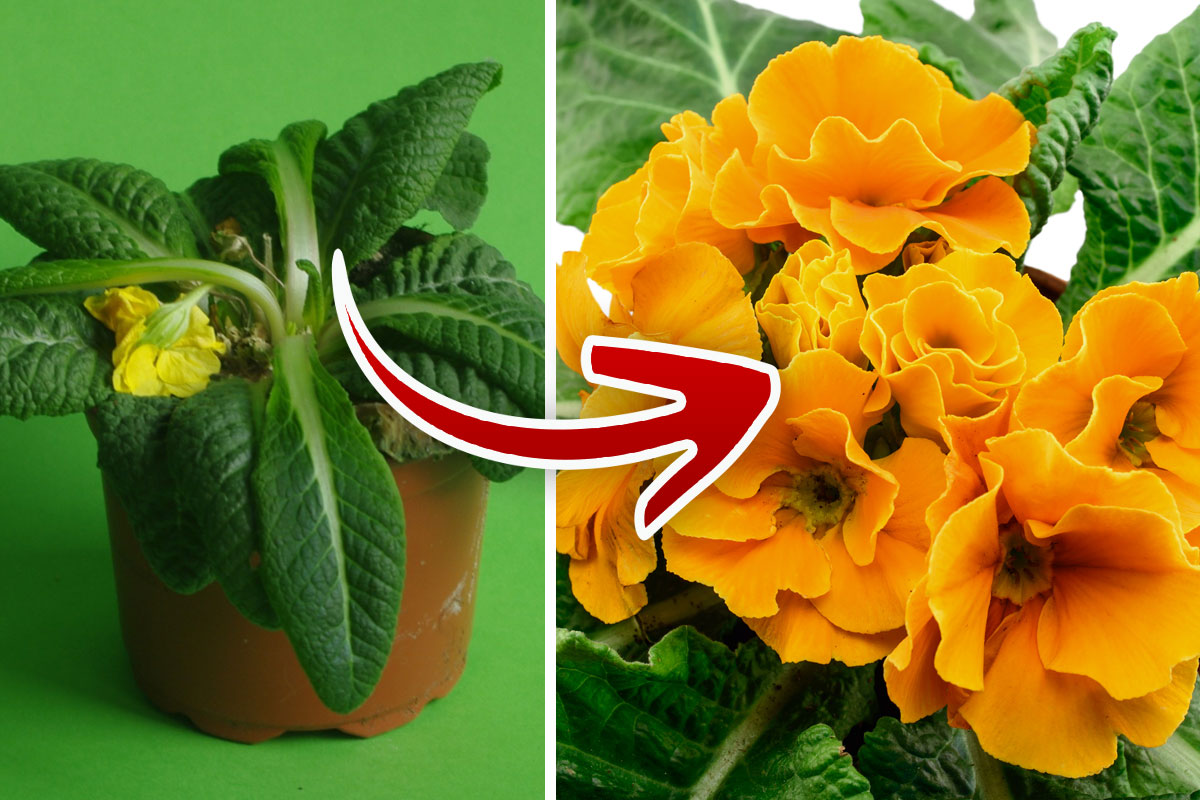
Primroses are a member of the Primulaceae family, which includes over 400 species. Most of which are grown as perennials throughout USDA plant hardiness zones 3 to 8.
These plants produce delicate, attractive blooms in a multitude of colors.
Primroses have a short bloom time, so it can be alarming if your plant hasn’t produced those much sought after flowers.
Thankfully, there are tips that can help maximize the blooms that the primrose produces.
Groom the Plant
One of the best things you can do for the primrose is to remove spent blooms and dead leaves as soon as possible. Even when a leaf or bloom is dead, the plant still sends vital resources to those parts. The plant is actually expending energy trying to care for those dead blooms, and that energy could be used elsewhere, such as making new blooms. That is why it is important to pinch the dead blooms and remove any dead leaves.
Provide the Proper Climate
One of the things that often confuses people is the temperature and climate requirements of the primrose. These plants are not tropical and instead prefer lower temperatures. They are a native to Europe and are commonly found in shaded areas in moist dense forests. In fact, these plants tolerate the cold and snow much better than in dry and hot climates.

Because of this, they are often grown as an annual outdoors or as a houseplant. To ensure the primrose produces blooms for as long as possible, keep it in an area with temperatures that are below 80-degrees Fahrenheit during the day, and between 50 and 60 degrees at night.
Give them Light, But Not Too Much Light
The Primrose will also need the correct amount of light in order to grow and create blooms. These plants need partial or full shade, but can tolerate full sun in early spring when the temperatures are not too hot. If growing indoors, place the plant near a north-facing window where it can receive filtered but bright light.
Good Drainage and Humidity
Primroses will also need soil with good drainage that can also retain moisture, as well as higher humidity levels.
A good way to go about this is to use light and airy potting soil that is rich in organic matter in a pot with drainage holes, and then place the primrose pot onto a pebble tray.
Pebble trays are simply a shallow tray filled with small pebbles that the pot sits on. When the excess water drains out of the pot, it fills the pebble tray, which then releases humidity into the air around the plant. This keeps the plant’s roots from becoming water logged while also increasing the humidity level around the primrose.

Watering and Fertilizing
Primroses do well in soil that stays moist but not soggy. This can be a hard balance to achieve. Every few days, test the soil by inserting your finger into the top few inches. Since you want to keep it moist, add more water anytime the soil begins to feel a bit dry. If the soil is wet, skip watering for a day or two and then recheck the moisture level.
Keeping the soil soggy will increase the chance of the roots becoming waterlogged, and could even lead to rot. It is important to find that balance of moist but not soggy soil.
Fertilizer is typically not needed if the primrose is growing in nutrient rich soil, such as soil enriched with humus. You can, however, use a bloom booster fertilizer (15-30-15) in early spring to help give the plant a kick of nutrients.





